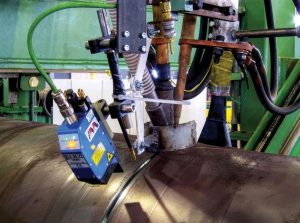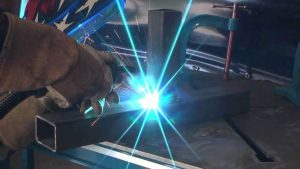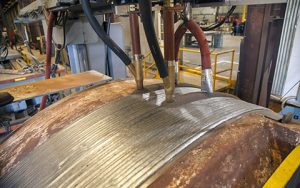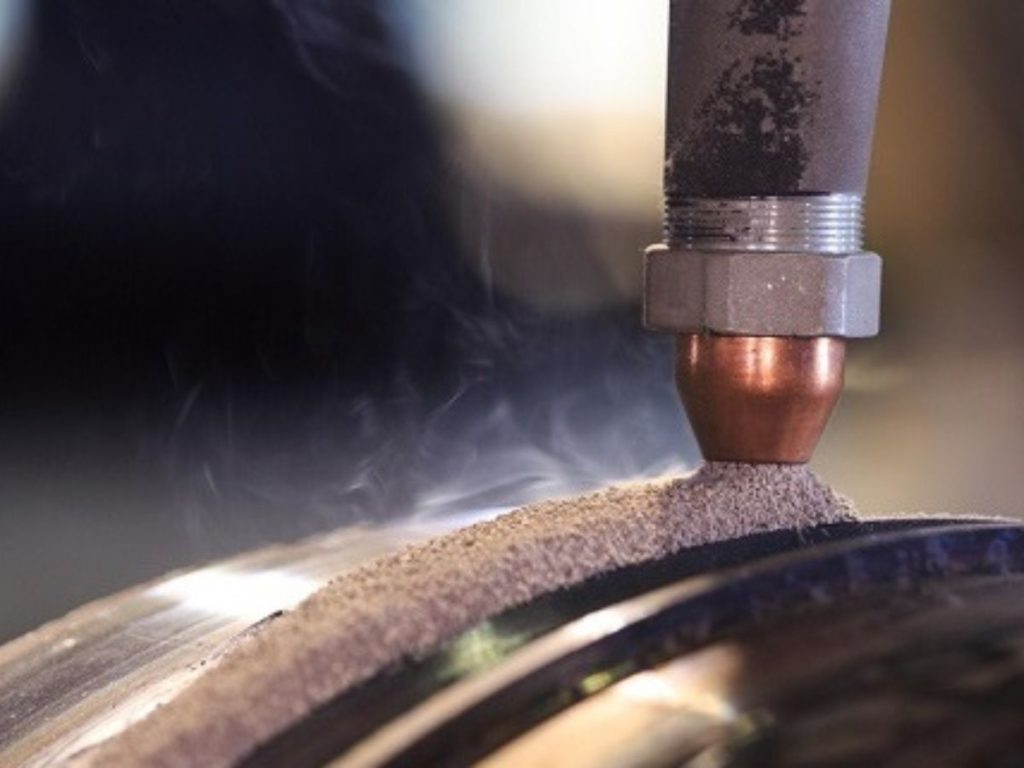If you’re curious about how sub arc welding works, you’ve come to the right place. This welding process uses electrically-cold filler wire to improve the weld metal’s properties. This filler wire can either be solid or flux-cored. If it’s solid, it can introduce certain special alloys into the weld area. Flux-cored electrodes are special wires that have to undergo special engineering.
What is ultrasonic welding process?
Ultrasonic welding is a fast, clean, and automated process that delivers a quality welding joint. It does not require filler metals, adhesives, or mechanical fasteners. It can be used for a variety of projects, including manufacturing plastic and metal parts. In addition, the process is safe and does not require special ventilation.
The process starts with a high-frequency electrical current flowing through a piezoelectric transducer. The piezoelectric transducer converts this electrical signal into mechanical vibration. A booster then amplifies this vibration and sends it through a horn in contact with the welding plate.
Ultrasonic welding is commonly used in electronics, medical and automotive industries. It can weld dissimilar metals. However, it is important to note that this process can be loud, so operators should always wear ear protection. In addition to joining metals, ultrasonic welding is also used to join thermoplastic parts. Moreover, it is ideal for fusing thin sheet metals, foils, wires, and meshes.
To start an ultrasonic welding process, the machine must have a welding horn. This horn transmits ultrasonic energy to the workpiece and also provides mechanical gain for the ultrasonic machine. Welding horns are usually made of titanium or aluminum. However, aluminum horns are only suitable for low-volume applications. The reason is that aluminum can result in distortion of the welds. To counter this, most horns have hardened tips.

What is ultrasoWhat is sub arcnic welding process?
Ultrasonic welding is a process that uses high frequency vibrations to join metals. It can weld dissimilar metals in a shorter time and without the need for fuel. It is also safer than conventional welding methods. This process can be performed on different types of materials, including plastics, metals, and tubes.
In this welding process, ultrasonic energy is transferred to the metal or other component through a welding horn tip. The tip is profiled to fit the component, ensuring maximum energy transfer. The component is held firmly in place by support tooling on the machine press base. The support tooling is designed to prevent the lower component from moving during the welding process.
The ultrasonic waveform is generated by mechanical transducers, which are either piezoelectric or magnetostrictive. The ultrasonic pulses are induced in an arc through ultrasonic excitation of current. The resulting weld is a durable and strong metal bond, which can be used for multiple applications. Ultrasound technology is becoming more common in many industries, including construction and manufacturing.

What is co2 welding process?
CO2 welding process is a semi-automatic process that uses CO2 gas for shielding the molten pool and conducting the arc. As opposed to MIG welding, which uses a bare metal electrode to generate heat, CO2 welding uses a coated electrode and a source of compressed air to provide the heat necessary to conduct the arc.
CO2 welding is best suited for thicker metal sheets. It is also better for reducing spatter, rust, and mill scale. However, CO2 cannot be used for welding thin materials, as the arc will not remain stable. It can be a good process to use for fillet and butt welds.
CO2 welding can be used for a variety of applications. It is often used for metal fabrication. It can be used to join various types of metal. CO2 welding is a great option for fusing stainless steel and other metals. It is also a good option if you need a high level of weld penetration.
To start using CO2 welding, you’ll need a machine and a wire feeder. You’ll also need a shielding gas and welding wire. Once these are in place, you’re ready to start welding.
Is submerged arc welding done underwater?
Submerged arc welding is a unique process where the electrodes are fed into an underwater arc. The arc is maintained with an automatic system. Submerged arc welding results in uniform, consistent welds, despite the fact that the process occurs under water. A submerged arc can produce a complete root penetration, but it is important to use high current and an electrode with a positive charge.
The process involves the use of special flux mixed water glass, which stabilizes the arc and protects the weld joint from the surrounding water. This method has been developed and tested on steel structures up to 9mm in thickness. It has been proven to be a reliable way to weld, and it can be put to practical use. The weld metal produced by submerged arc welding is very soft, so it’s easier to cut.
Submerged arc welding is a method that allows for weld metals to have eighty percent of the strength of the base metal. The cooling rate for this process at 500degC is 23degC/sec, compared to 10degC/sec for a similar arc in air. This is a major advantage of underwater welding compared to air welding.

What are the disadvantages of Submerged Arc Welding
Submerged arc welding is a fast, easy way to produce strong welds that require minimal manpower. The process produces very smooth, uniform welds with little or no spatter and very little arc flash. It is also easily automated and does not require specialized skills.
Some of the advantages of sub arc welding include increased deposition rates and increased travel speed. However, there are some drawbacks. For one, this process cannot be used in all positions, including inside of pressure vessels and other structures. Those positions where traditional welding processes cannot be used are inaccessible to submerged arc welding.
One of the disadvantages of submerged arc welding is that it cannot be used on materials that are more than 12 mm thick. Secondly, the operator cannot see how the welding process is progressing. This makes it important to have the right accessories for gauging the progress of the process and ensuring that the joint is fully welded.
Another disadvantage is the need for accurate edge preparation and fit up on the joint. The weld will be poorly shaped without it. The flux may also cause the workpiece to burn. Also, there is the potential for contamination and weld porosity. The weld metal chemistry is difficult to control and alloyed fluxes can alter the composition of the weld metal. Lastly, the arc’s location must be protected from atmospheric air, which can cause oxidation. In addition, the temperature of the arc can reach up to 6300deg F, which is more than enough to melt steel.
Is Submerged Arc Welding automatic?
The process of submerged arc welding involves welding a joint using an arc. The arc heats the base metal and the wire. The molten weld metal melts, forming a slag-covered weld bead. The slag is recovered by a chipping hammer. This process is faster and stronger than other methods of welding.
Submerged arc welding is an efficient welding process for many applications. It has high thermal efficiency and minimal heat loss. It also does not require fume extraction or spatter. This makes it a perfect solution for large-scale structural steel manufacturing. It is possible to use submerged arc welding in an automated process or manually. There are various uses of arc welding in industries such as shipbuilding, pipeline construction, and the manufacturing of tanks and pressure vessels. The versatility and efficiency of submerged arc welding make it a popular choice for these applications. In addition, the ability to control the welding parameters easily and consistently makes submerged arc welding a reliable method for producing high-quality welds.
Submerged arc welding is most efficient for thick metal plates. It can weld larger parts and can also be automated using industrial robots. The process is most commonly used in the heavy metal industry, railroads, wind turbines, and in construction. It works best with metal plates that are two to 100 mm thick. Its automation provides a fabricator with distinctive advantages, such as increased capacity and productivity.
Automatic submerged arc welding has three basic types of guns. One type is a fixed gun that deposits flux around the wire as it melts. Another type of gun is a deep groove gun. The deep grooved gun feeds flux into the weld pool from a hopper overhead.

